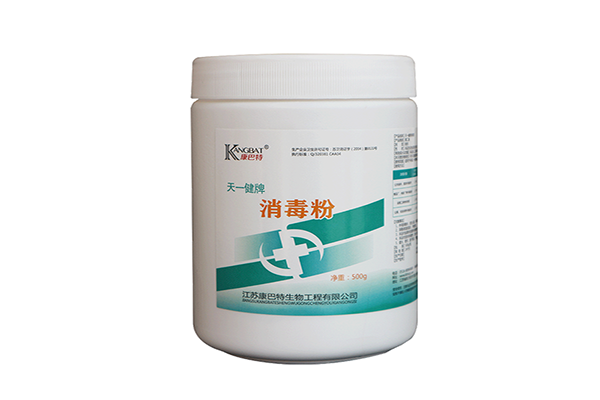Disinfection refers to the use of suitable methods (including physical, chemical or biological) to eliminate or kill microorganisms on the surface of poultry and livestock and living conditions and other harmful microorganisms according to different production stages and goals. There are many types of disinfectants. Common veterinary disinfectants are mainly: phenols, aldehydes, alcohols, acids, alkalis, chlorine preparations, iodine traditional Chinese medicine preparations, heavy metal salts, surfactants, etc.

1. Disinfectants such as phenolic compounds can transform and settle the protein of microorganisms and have antibacterial effects, and can kill common bacteria. The compound phenol can kill spores, pathogens and bacteria. The key is formic acid, compound phenol, cresol and so on.
2. The antibacterial effect of hydrocarbon-substituted hydrocarbons is also very strong. Among them, indoor formaldehyde has good actual effect and is the most common. Veterinary disinfectant manufacturers introduced that with the development of production technology and the requirements of the breeding industry, high-efficiency disinfectants such as glutaraldehyde and o-phthalaldehyde are also widely used.
3. The basic principle of sterilization of erythorbic acid erythorbic acid disinfectant is that the higher concentration of hydroxide ions can make the bacterial protein conversion and hydrolysis reaction, while the lower concentration of hydroxide ions can change the surface protein of the bacteria. The degree of dissociation of the two chemical substances inhibits the permeability of the cytoplasm and affects the digestion, absorption, metabolism, metabolism and growth of bacteria. Introduction to the price of veterinary disinfectant. Hydroxide ions can also compete with other positive ions to absorb on the surface of the bacteria, preventing all normal themed activities of bacteria.
4. Alkali The key alkali disinfectants used to disinfect and sterilize poultry and livestock include anhydrous aluminum chloride, caustic potassium, lime powder, grass ash, baking soda, etc. The principle of alkali disinfection and sterilization is that negative hydroxide ions can hydrolyze reactive proteins and nucleotides, which damage the structure of bacterial cofactors and cell membranes. In addition, alkalis can also inhibit all normal metabolic functions of bacteria and dissolve the bacteria. The glycogen revived the bacteria. It has a strong killing effect on pathogens and can be used for disinfection and sterilization of many viral infections and infectious diseases. Caustic soda solution with higher concentration can also kill spores. Alkali disinfectants are most commonly used for the disinfection and sterilization of midfielder areas and pens roads, environmental pollution machinery and equipment (anti-corrosion) and various objects and their feces and waste materials with pathogenic bacteria during the entire process of livestock feeding.